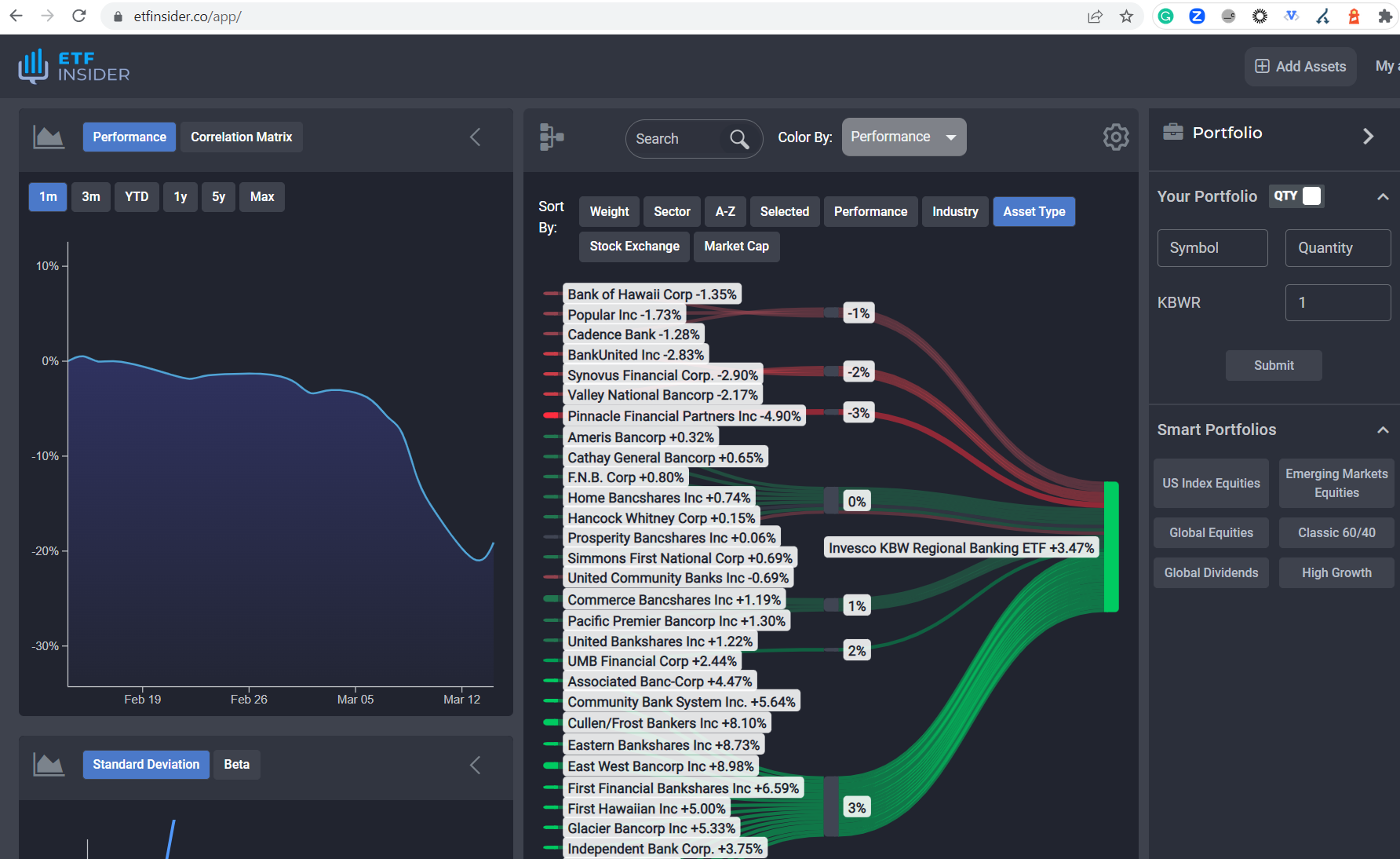
5 Key Reasons for Silicon Valley Bank (SBV)'s Collapse: What it Means to You
There is no denying that the technology sector dominates the US stock market. For context, $AAPL, $MSFT, and $AMZN are the top 3 holdings of both S&P 500 and NASDAQ 100. Silicon Valley, a prominent place situated in Northern California, serves as the international hub for these big technology companies but at the same time, it also houses some of the most promising tech startups and serial venture capitalists.
At the forefront is the very bank named after the undeniably remarkable place, Silicon Valley Bank (SVB), which has been a leading player in providing financing and advisory services to both startups and venture capitalists. However, in a rather stunning turn of events, SVB announced last week that it was filing for bankruptcy, citing a "range of factors" that eroded its capital base and, more importantly, its reputation.
The announcement has sent shockwaves through the tech and banking industry and raised questions about the stability and resilience of the banking ecosystem.
In this article, we will explore five key reasons why SVB collapsed and what it can mean to your investments:
1. Overexposure to High-Risk Ventures
First and foremost, one of the main reasons cited by SVB's management itself for its bankruptcy was its "overreliance" on financing startups and early-stage companies with considerably high failure rates and low to zero profitability.
While SVB had built a strong brand and network in the tech industry, it had also simultaneously exposed itself to the inherent risks of funding in unproven business models and speculative technologies.
2. Poor Risk Management and Questionable Practices
The second and perhaps unexpected factor that contributed to SVB's downfall was its lack of effective risk management. According to regulatory filings and industry experts that shed light on the inner doings of the company, SVB massively underestimated the risks associated with its loan portfolio, failed to diversify its funding sources, and has a long history of tolerating conflicts of interest among its top executives and board members.
Consequently, these shortcomings eroded the confidence of SVB's investors and partners, triggering regulatory scrutiny and legal disputes, which exposed the poor liquidity and insolvency of the company.
3. Steep Interest Rate Hike
Thirdly, another factor that industry analysts have identified to be a significant contributor to the bank's collapse is the ongoing year-long interest rate hike being implemented by the US Federal Reserve (Fed), which has detrimentally affected the core business of the company in a time where there is also a massive slowdown of growth in the tech industry.
4. Macroeconomic and Geopolitical Risks
Fourthly, SVB also faced external risks beyond its control. On top of the rising interest rates, it also suffered from last year’s economic slowdown, international trade tensions, and regulatory uncertainty.
For example, last year, SVB faced cash flow problems, delays in funding rounds, and increased competition from banks offering the same services. At the same time, SVB's international operations were exposed to geopolitical risks and compliance challenges, such as the US-China tensions and the war in Europe.
5. Deteriorated Reputation and Trust
Lastly, the final straw to the company's collapse is the tremendous deterioration of its reputation and trust among its major stakeholders. As news of SVB's financial troubles and questionable practices emerged, its clients, investors, and partners became more skeptical, cautious, and impatient.
This further led to a vicious cycle of deposit and revenue decline, a high withdrawal rate, a massive sell-off, and increased government scrutiny. Thus, despite SVB's efforts to improve its business bottom line, it could not prevent the eventual bank run and immense sell pressure.
What It Means to You: The Impact on Technology and Banking ETFs
So what does this seemingly isolated issue means to you and your investments? Well, for starters, SBV's collapse is the second-largest bank run in US history. Currently, the market sentiment is overwhelmingly bearish: this is reflected in S&P 500's price, which lost roughly 3.4% in just two days. Hence, this event created a massive ripple effect across the entire market.
More specifically, if you are holding a tech or banking ETF, brace yourself for a likely further sell-off caused by the collapse over the short term. Nevertheless, if you are a long-term investor, this can also present an opportunity to accumulate as panic ensues. Just remember to do your own research before making any investment decision.
Fortunately, there are now sophisticated data visualization tools, such as ETF Insider, that help you with your due diligence by presenting valuable information such as a fund's industry exposure and individual asset weight. Hence, helping you avoid overexposure, fund overlap, and inadequate diversification and ensure your portfolio reflects your investment goals.
Get started